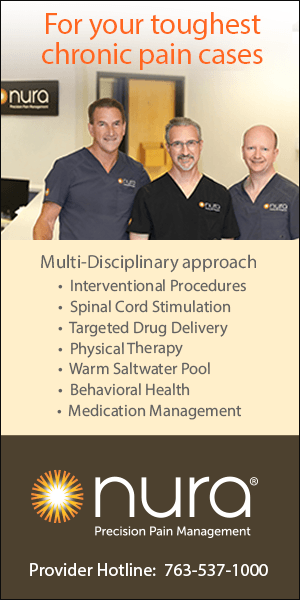n February 2024, the Minnesota Department of Human Services (DHS) received federal approval to replace Personal Care Assistance (PCA) and Consumer Support Grant (CSG) benefits with a new option called Community First Services and Supports (CFSS). This change will improve services for Minnesotans who need personal care support to live and thrive in the community.
cover story TWO
Community First Services and Supports
A New Model for Personal Care Support
By Mary Lenertz
Everyone currently eligible for PCA and CSG will also be eligible for CFSS. People transitioning from PCA to CFSS will continue to have staff support as they live, work and engage in their communities. In general, PCA and CFSS providers in the future will assist with activities of daily living such as eating, bathing, grooming and transferring. In addition to those supports, CFSS will give people more flexibility and more options for meeting their needs.
People will transition to the CFSS at their next annual reassessment beginning October 1, 2024. The process to transition from PCA to CFSS will take approximately 18 to 24 months to get everyone enrolled in the new program.
Several states have implemented similar programs for subsets of populations; no other state, however, has implemented it for the entire PCA population, as Minnesota is doing. The Centers for Medicare and Medicaid Services (CMS) aims to use Minnesota’s plan for CFSS as a model for other states.
Why is this Important?
There is a severe workforce shortage in Minnesota, especially in the direct care workforce, which provides a spectrum of services to a wide range of individuals and plays a vital role in maintaining people’s health and quality of life. The problem continues to grow as more workers retire and fewer new workers are entering the workforce.
The 2023 Minnesota legislature made record investments in personal care services.
CFSS will bring new workers into the workforce because more people are eligible to be paid caregivers. One such expansion is the ability of a person using CFSS to be a worker for another person using CFSS. This will help meet the care and financial needs of participants. A second expansion is the ability to pay spouses and parents of minors for care giving. This has been allowed only in the Consumer Directed Community Supports waiver program. This is a significant advantage for families supporting people with disabilities who may have given up careers to care for their loved one. During the COVID-19 public health emergency, there was a federal flexibility that Minnesota used to temporarily pay parents and spouses to provide PCA services. That option, which stopped at the end of the public health emergency, will now be permanently available through CFSS.
Finally, CFSS will also allow for the purchase of assistive technology or emergency response systems that increase a person’s independence and reduce reliance on human assistance. This allows the workforce to serve more people with the same or fewer direct workers.
There has always been a gap with DHS’ ability to communicate directly to people, families and direct workers, and DHS has relied on lead agencies and providers to communicate information. This model of communication is even more disparate in underrepresented communities that do not use English as their primary language. To address these gaps, DHS is deploying a new model of communication, engagement and marketing focused on people, families and workers including some directed to specific communities. The goal is for more information to reach people across Minnesota and for the information to be understandable for all.
Additional Benefits of CFSS
People who use CFSS will have more options and supports to create a personalized service plan. The first choice they make is which CFSS service model best supports them. They can choose between two service models, the CFSS Agency model or the CFSS budget model. People who want to receive support from a provider agency may do so using the CFSS agency model. The CFSS budget model allows them more choice and control over their budget and to be the direct employer of their support workers.
A new service called Consultation Services will provide education on the person’s options and support writing a service delivery plan. Consultation Services will do as little or as much support as the person wants them to provide.
The state will provide a worker training and development budget that the provider agency (agency model) or the person (budget model) may use to train workers on the individual needs of the person receiving care.
Investments in the Programs and Workforce
The 2023 Minnesota legislature made record investments in personal care services to address the workforce shortage and to help professionalize the direct worker role. The legislature invested $340 million in fiscal years 2024-25 and nearly $550 million in fiscal years 2026-27.
Legislation raised provider rates, with increases ranging from 21.3% to 26.6%. Rates will be used to increase worker wages based on a worker’s experience and education to create career ladders and keep more workers in this field, beginning in 2025. DHS has advocated for, and Gov. Walz and the Legislature agreed, that it’s critical to pay these workers a livable wage if we want to sustain a workforce to meet the needs of the aging and disability populations now and into the future.
Finally, the legislature directed DHS to create specific worker training opportunities to help them be better prepared to do this work and to gain education to expand their skills and therefore their wages.
How do people get CFSS
For people who want to learn more about CFSS or any other disability-related topic, they should first contact Minnesota’s Disability Hub. The hub has a website full of resources and information to help people learn more about disability services and how to navigate them. The website is Disability Hub MN - Home. From the website, people can chat directly with knowledgeable staff. They can also find a phone number and email address to reach those same resources depending on their preferred method of communication.
Nearly 93,000 home care workers in Minnesota provide vital daily service to seniors and people with disabilities.
When people need to initiate disability services and support they need to request a MnCHOICES assessment to determine eligibility and level of care. They can do this by reaching out to their county or tribal nation’s social services department, or managed care organization if they have one, to request it. The assessment will also determine the person’s allocation or budget to create the service plan.
The service plan is created with support from the new service provider Consultation Services. These private sector providers contract with the state and will help people understand their program options, make informed choices about what works best for them and write the plan that their county, tribal nation or managed care organization will review and approve. People can get as much or as little support from Consultation Services depending on their preferences.
People can revisit their service plan during the year if needed and continue to access Consultation Providers for support. At a minimum, the service plan needs to be updated each year after their annual MnCHOICES assessment.
Looking Back
Minnesota started offering personal care service benefits in 1978 to support people with physical disabilities living in the community, and these services have continued to be an important support for people of all types of disabilities living in the community for decades.
After passage of the Affordable Care Act in 2010, a new federal option became available for all states to provide supports in a more flexible way. In 2013, the Minnesota Legislature passed the CFSS statute directing the DHS to develop this new option in Minnesota. An implementation council was created to help DHS design CFSS and is still in place to assist with the roll-out plan. DHS spent years working with the council and other community partners and advocates to develop policies, navigate through complex implementation questions and negotiate with the federal government to amend the program plans. Over the past year and a half, DHS and CMS met weekly to talk through all the details in Minnesota’s CFSS program design. CMS provided technical assistance and guidance to Minnesota, which resulted in Minnesota’s submitting the updated CFSS plan to CMS formally in November 2023 and approved in February 2024.
As the problems around providing direct care have grown, so has collaboration around finding ways to solve them. The Affordable Care Act provided a pathway for DHS to implement changes that could give people more choice and control of how they use services.
There have always been issues of provider rates, reimbursement and worker pay in the personal care services sector. As the population served has grown, the range of services offered expanded, the challenges have grown. Addressing challenges has become the focus of considerable study and reports by both state and federal agencies over the past 10 years. There are numerous services and associations addressing individual elements of direct care, and they are all facing a similar crisis.
As formally classified by the Bureau of Labor and Statistics, direct care workers include home health aides, personal care aides and nursing assistants. They provide a wide range of services to a wide range of individuals and play a vital role in maintaining their health. These workers help clients bathe, dress, eat and perform routine activities, many of which involve health care related services, some with life-or-death concerns. Improved quality of life is the biggest asset they offer; however, the cost savings they create by minimizing unnecessary hospitalizations is very significant and difficult to calculate. Unfortunately, despite its considerable value, the home care industry is facing a crisis. As is almost every sector of health care delivery, direct care faces major workforce shortage issues.
Nearly 93,000 home care workers in Minnesota provide vital daily service to seniors and people with disabilities. Nationwide, in 2023 the home care providers industry generated over $136 billion in revenue and that figure will grow quickly. It is projected to be the fastest growing area of employment in the country. Regretfully, this workforce often experiences inadequate training, poor supervision and a lack of professional advancement opportunities. Required training for home care workers is limited and often fails to include basic communication and problem-solving skills that are needed to build the critical relationships between caregivers and older adults that underlie quality care. Supervision in the field is minimal and often amounts to policy enforcement rather than supportive problem-solving. Undervalued and poorly integrated into care teams, home care workers rarely see opportunities for career growth.
Physician Takeaways
Almost every physician has some patients who either may already be receiving home care or may benefit from it. Improving communication around care provided at home to physicians is an area that needs improvement. Physician awareness of the range of services available could also be improved. This is particularly important in that a wide range of access to these services requires a prescription from a physician. While some patients may be unwilling to discuss or accept help, others may welcome help but maybe unaware they are potentially eligible to receive it.
A few things of note regarding CFSS: a person’s spouse or the parent of a minor may serve as that person’s support worker and receive reimbursement; a person who uses CFSS may serve as the support worker for another person who uses CFSS; people enrolled in CFSS may choose to buy goods and services to aid in their independence, including the purchase of a personal emergency response system (PERS) to provide backup support.
You will be hearing more about CFSS as we get closer to transitioning to the new model. Patients may even ask you about it. Extensive information, including brief tutorials, is available by searching for MN DHS CFSS.
Mary Lenertz is the home and community based services manager at the Disability Services Division of the Minnesota Department of Human Services.
MORE STORIES IN THIS ISSUE
cover story one
Hospital at Home: Inside a growing trend
By David W. Plocher, MD
cover story two
Community First Services and Supports: A New Model for Personal Care Support


















